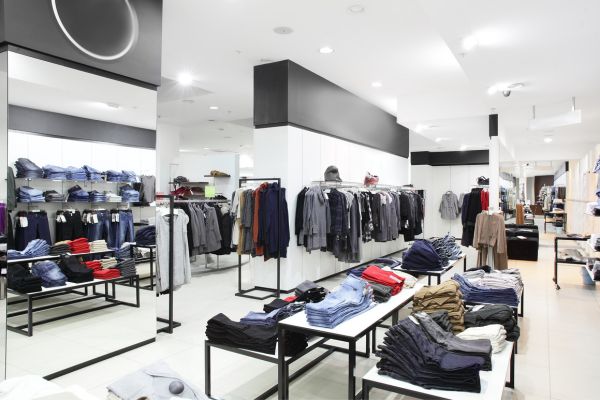When it comes to legendary names in the fashion world, Dior is right up there at the top. It’s not just another luxury label; it’s a fashion house that literally changed the way people looked at style after World War II. So if you’ve been curious about Dior fashion house facts, buckle up — because there’s a lot more to this story than just pretty dresses and perfume bottles.
The Birth of Dior’s Iconic Vision
The Dior fashion house was officially founded in 1946, right in the heart of Paris. Just think about that timing for a second. The world was coming out of the devastation of war, and people craved beauty, elegance, and optimism again. Christian Dior, the man himself, stepped in with what became known as the “New Look.” This wasn’t just fashion; it was a cultural reset.
He introduced soft shoulders, cinched waists, and full skirts that practically whispered glamour. Women, who had been stuck in rationed, practical clothing during wartime, suddenly had a chance to embrace femininity again. Let’s be real — Dior didn’t just design clothes, he gave people hope wrapped in fabric.
Dior’s First Collection Shocked the World
Here’s one of the most surprising Dior fashion house facts: when Dior’s first collection launched in 1947, not everyone loved it. In fact, some critics called it extravagant and wasteful because fabric had been rationed for so long. But the thing is, it was exactly that boldness that made the collection unforgettable.
Within weeks, the “New Look” was everywhere. Celebrities, socialites, and royals couldn’t get enough of it. Even the media, who initially doubted Dior, had to admit that he had redefined women’s style almost overnight.
Dior Wasn’t Just About Clothes
One of the coolest Dior fashion house facts is that the brand didn’t waste time sticking to just clothing. Almost immediately, Dior expanded into accessories, handbags, shoes, and — most famously — fragrance. The first perfume, “Miss Dior,” launched in 1947 and became a timeless classic.
The message was clear: Dior wasn’t here to sell you a dress; he wanted to sell you a whole lifestyle. The fragrance, the clothing, the accessories — everything tied together into this dreamy, elegant universe. That’s honestly one of the reasons Dior remains such a powerhouse today.
A House That Outlived Its Founder
Here’s a bittersweet fact: Christian Dior’s reign as the creative genius behind the fashion house was shockingly short. He passed away suddenly in 1957, just a little over a decade after starting the brand. You’d think that would’ve been the end of Dior, right? But nope — the story only got more interesting.
A 21-year-old Yves Saint Laurent, who had been Dior’s assistant, took over as creative director. Imagine being barely out of your teens and suddenly running one of the most important fashion houses in the world. Wild, right? Saint Laurent carried the Dior spirit forward and eventually made a name for himself with his own label, but it all started with Dior.
The Star Power Connection
When you talk about Dior fashion house facts, you can’t skip the brand’s long-standing relationship with celebrities. From Grace Kelly to Princess Diana, and now modern icons like Jennifer Lawrence and Natalie Portman, Dior has always had a knack for attracting the most glamorous faces of every era.
The thing is, Dior doesn’t just use celebrities for marketing — these partnerships feel like they’re woven into the DNA of the house. Princess Diana, for example, carried a Dior bag so often that it was later renamed the “Lady Dior” in her honor. That’s next-level brand legacy.
Dior’s Role in Haute Couture
Haute couture is a term thrown around a lot, but Dior takes it seriously. The brand has always been one of the leaders of the Paris haute couture scene. Each couture collection is crafted by hand, using techniques that have been passed down for generations. And no, this isn’t just for the runway — these creations are ordered and worn by some of the wealthiest and most stylish people in the world.
One fascinating Dior fashion house fact here is that the ateliers (the workshops) are considered sacred ground in the industry. Visiting one is like stepping into a living museum of craft and artistry. It’s fashion, yes, but it’s also art in its purest form.
Reinvention Through Creative Directors
Since Dior’s passing, the fashion house has gone through several creative directors, each leaving their unique stamp on the brand. From Yves Saint Laurent to John Galliano, Raf Simons, and now Maria Grazia Chiuri, Dior has constantly evolved.
Galliano brought drama and fantasy, Simons offered minimalism and modernity, and Chiuri has been focusing on feminism and making Dior relevant to today’s conversations. It’s kind of like Dior has this magical ability to stay true to its roots while still reinventing itself with every new leader.
Dior in Pop Culture
Another fun Dior fashion house fact is how deeply it’s embedded in pop culture. Dior has been name-dropped in countless songs, appeared in movies, and of course, is a staple on red carpets around the globe. From Marilyn Monroe declaring she wore nothing but Chanel No. 5 in bed (yet often photographed in Dior gowns) to Rihanna rocking custom Dior pieces, the house is everywhere.
And let’s not forget the Dior sneakers and streetwear collabs that have exploded in recent years. You know a brand is strong when it can swing from haute couture gowns to hype streetwear and still feel authentic.
The Global Power of Dior
Today, Dior isn’t just a Parisian gem; it’s a global empire. With flagship stores in almost every major city and a huge online presence, the fashion house has managed to keep its exclusivity while still being accessible to new generations. That balance is rare.
One of the reasons is that Dior has always been careful about brand identity. Even when experimenting, there’s always that thread of elegance and refinement that connects everything back to Christian Dior’s original vision.
Wrapping It Up
So there you have it — a deep dive into some of the most fascinating Dior fashion house facts. From its game-changing “New Look” to its survival after Dior’s early passing, from haute couture workshops to red-carpet dominance, the house of Dior has earned its legendary status.
The thing is, Dior isn’t just about clothing or perfume; it’s about shaping culture, rewriting the rules of elegance, and staying timeless in an industry that moves at lightning speed. And honestly, that’s why when people talk about Dior, they’re not just talking about fashion — they’re talking about history.



